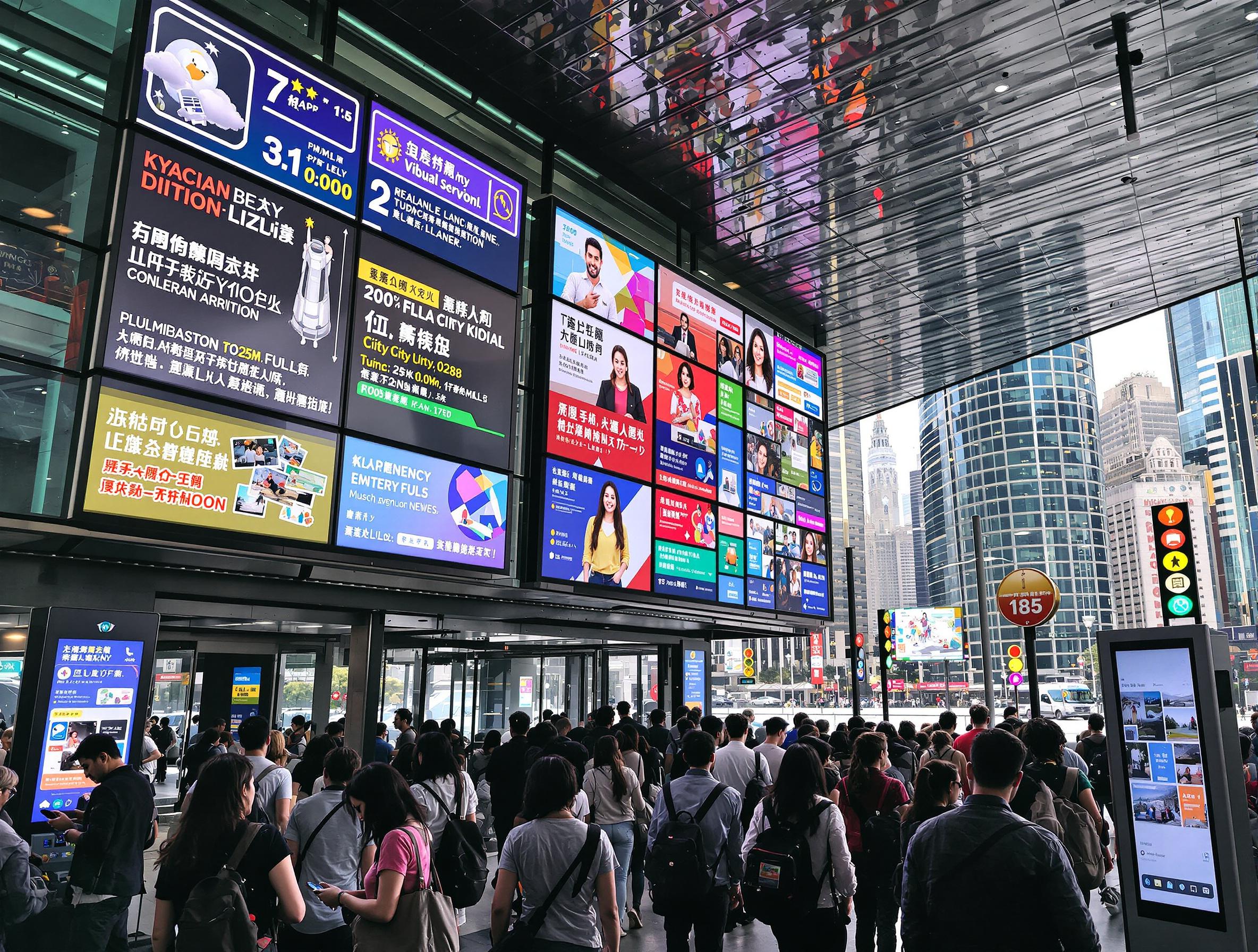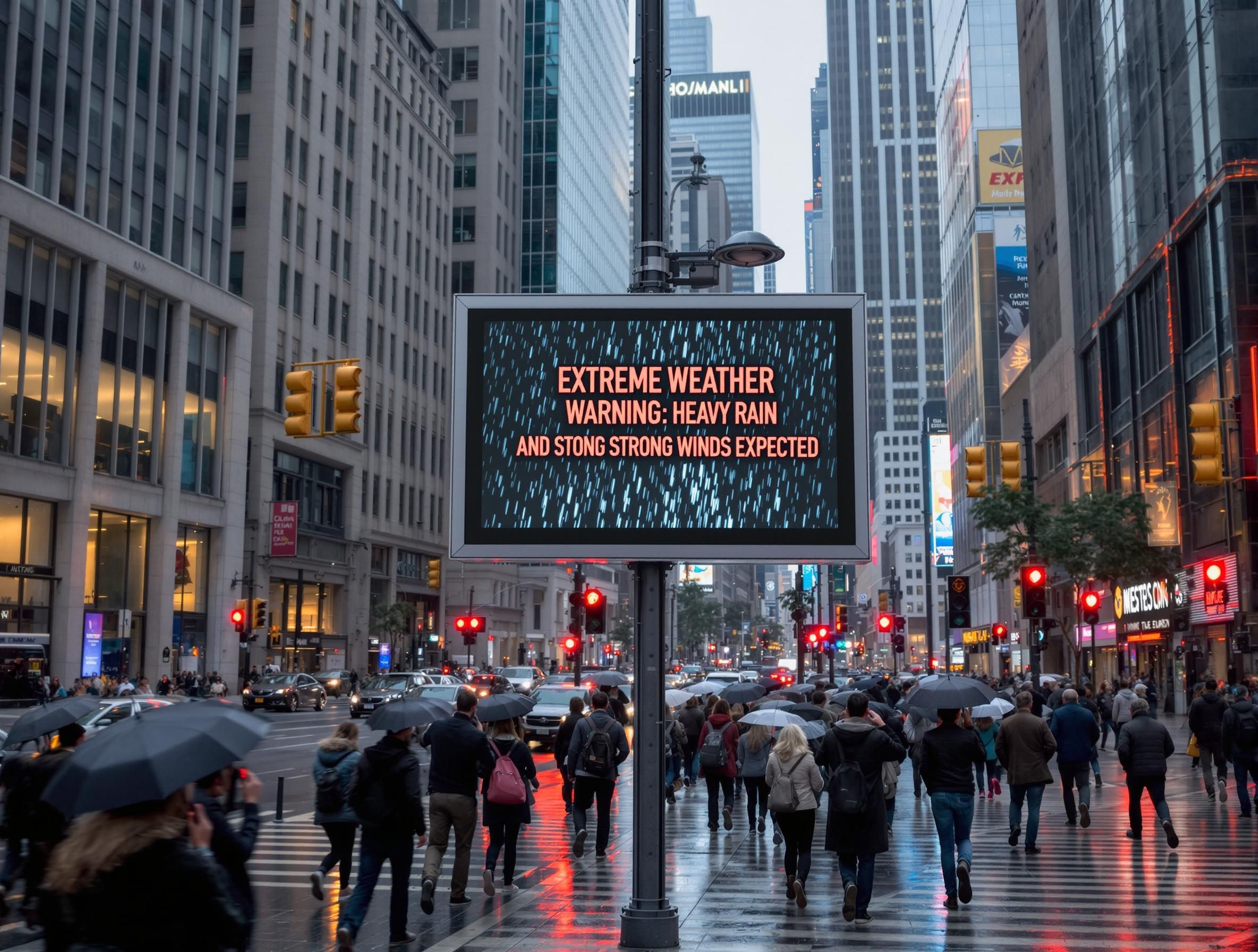· Rudraveer · 3 min read
How Digital Signage is Making Cities Smarter

Introduction
The cities of tomorrow are here today. With rapid urbanization, city leaders are looking for ways to enhance communication, streamline transportation, and improve public safety—all while keeping citizens engaged and informed.
Enter digital signage.
These screens are more than just display boards; they’re dynamic, real-time information hubs that help smart cities function efficiently. Let’s explore how digital signage is transforming urban spaces.
1. Enhancing Public Communication
Think about the last time you needed urgent public information—maybe a change in metro schedules, an extreme weather alert, or directions to a city event. Traditional signs simply can’t keep up.
Digital signage updates in real time, ensuring people get the right information when they need it most. Cities use screens in public spaces like bus stops, train stations, and government buildings to display:
✅ Emergency alerts
✅ Public service announcements
✅ Event schedules and city-wide updates
2. Making Transportation Smarter
Ever been frustrated by waiting for a bus with no clue when it’s arriving? Real-time transit updates on digital screens solve this problem.
Smart signage systems integrate with city transit data to provide:
🚆 Live bus/train arrival times
🚦 Traffic congestion updates
📍 Interactive wayfinding for pedestrians
This helps reduce commuter stress and encourages people to use public transport more efficiently.
3. Boosting City Safety and Awareness
Public safety is a top priority, and digital signage plays a vital role in disaster management and emergency response. Imagine a situation where an area is unsafe due to weather conditions or an accident. Instead of relying solely on sirens or social media alerts, digital signs can immediately display warnings and alternative routes.
Cities worldwide are using smart signage for:
🚨 Disaster alerts (earthquakes, floods, extreme weather)
👮 Public safety messages (crime prevention, missing person alerts)
🛑 Traffic and road closures

4. Elevating the City Experience
Beyond functionality, digital signage also enhances the urban experience by creating engaging, interactive city environments. Cities use digital billboards, touch-screen kiosks, and augmented reality to provide:
🎭 Event promotions – Museums, concerts, and city festivals get more visibility.
🌿 Green initiatives – Showing energy savings, air quality updates, and eco-friendly campaigns.
🏛️ Tourism experiences – Interactive maps, historical site information, and multilingual guides.
The result? A city that feels alive, connected, and accessible to everyone.
Flickerwall: Powering the Future of Smart Cities
At Flickerwall, we help cities bring digital signage to life—without the complexity. Our easy-to-manage, cloud-based platform lets city officials, transportation authorities, and businesses deliver real-time updates seamlessly.
🌟 Scalable – Whether it’s one screen or a hundred, we’ve got you covered.
🛠 Easy to use – Manage everything from a single dashboard, no tech expertise needed.
🔗 Seamless integration – Works with your existing data and communication systems.
If your city is ready to step into the future, we’re here to help. Let’s make urban spaces smarter, safer, and more connected—one screen at a time.
🚀 Want to explore how Flickerwall can transform your city?
👉 Start Your Free Trial Now
No credit card required. Instant access. Risk-free.
#SmartCities #DigitalSignage #UrbanTech #Flickerwall #CityInnovation

